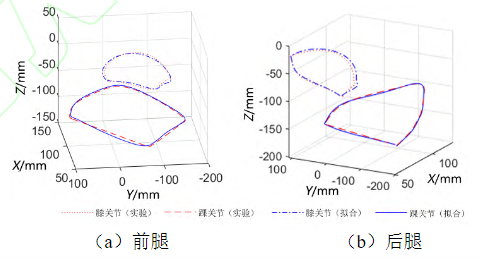Bionic crawling robots are an important branch of bionic robot research. They have good environmental adaptability and can walk on rough, soft, and muddy terrain, traverse obstacles like animals, and explore unknown environments and resources. A key area of research in the development of bionic crawling robots is to program a gait like that of a crawling animal.
Jiang Jianping’s research team from the School of Aeronautics and Astronautics at Sun Yat-sen University used the Siamese crocodile as a model for a robotic bionic crocodile. Using three-dimensional motion capture technology, they performed gait observation experiments and monitored the movements of the crocodile. CoppeliaSim software was used to generate a simulation of the robot crocodile’s gait, which provided an accurate model for the bionic gait of a robotic crocodile.
Gait observation experiments

Gait observation experimental site

Experimental specimen with tracking markers
The research team used a NOKOV motion capture system to perform a gait observation experiment of crocodiles. Equipped with 15 NOKOV Mars 4H motion capture lenses, the team captured the hip joints (above the acetabulum), the outer knee joints, and the outer ankle joints on the front and rear legs of the crocodile. This data represented the movement characteristics of the crocodile’s high crawling gait.

Schematic diagram of experimental data curve versus fitted curve
The research team noted the three-dimensional curves of the knee and ankle joints on the front and rear legs and applied the Gauss-Newton algorithm. The errors of the best-fit curves are 2.55% and 2.17% for the front and rear legs, respectively; the fitted data closely resembled the experimental data.
Bionic gait simulation experiment

Simulation of the crawling motion of a bionic robot crocodile
In order to generate controls for a robotic crocodile, the research team created a virtual prototype of the robotic crocodile using CoppeliaSim software and used MATLAB to communicate with the simulation environment. The simulation results showed that there was no interference between the various parts of the robotic crocodile, and that it could stably crawl forward, alternating each foot. The model is also able to smoothly connect the support phase and the step phase of the robotic crocodile’s gait to be like that of a real crocodile.
The results of the motion simulation experiment of the virtual robotic crocodile prototype showed that the robot could crawl forward and maintain stability at a speed of 0.3 m/s with a gait like that of a real crocodile. This research provides an accurate reference for the gait planning of future robotic crocodiles.
Bibliography: